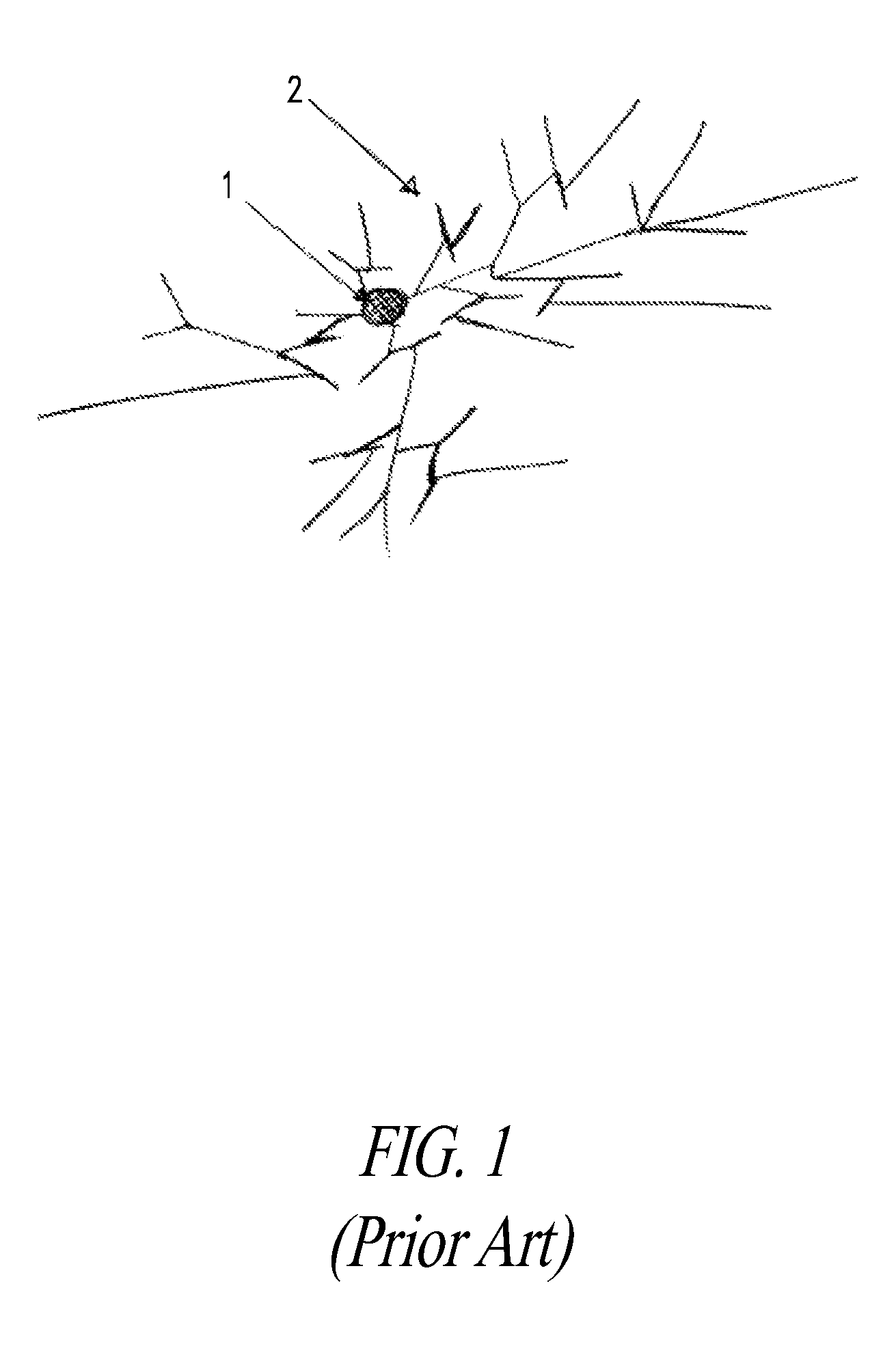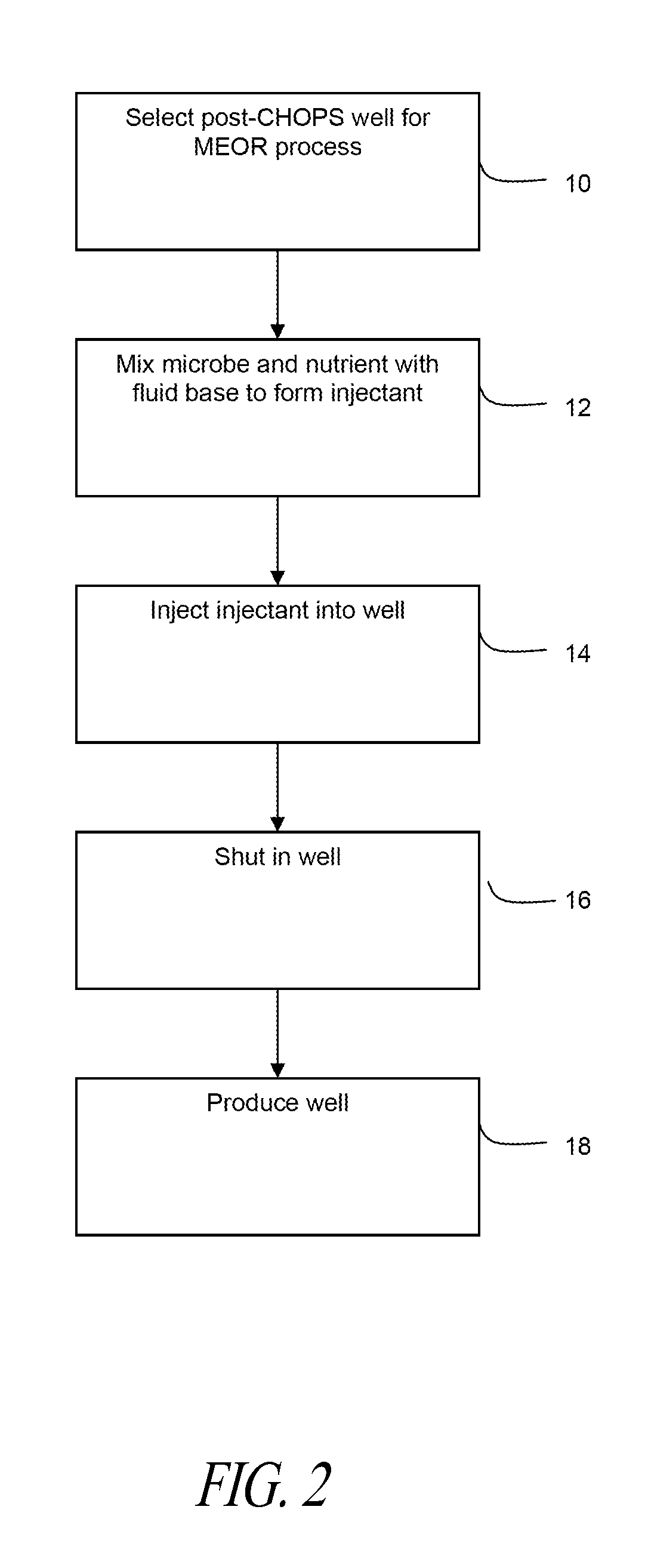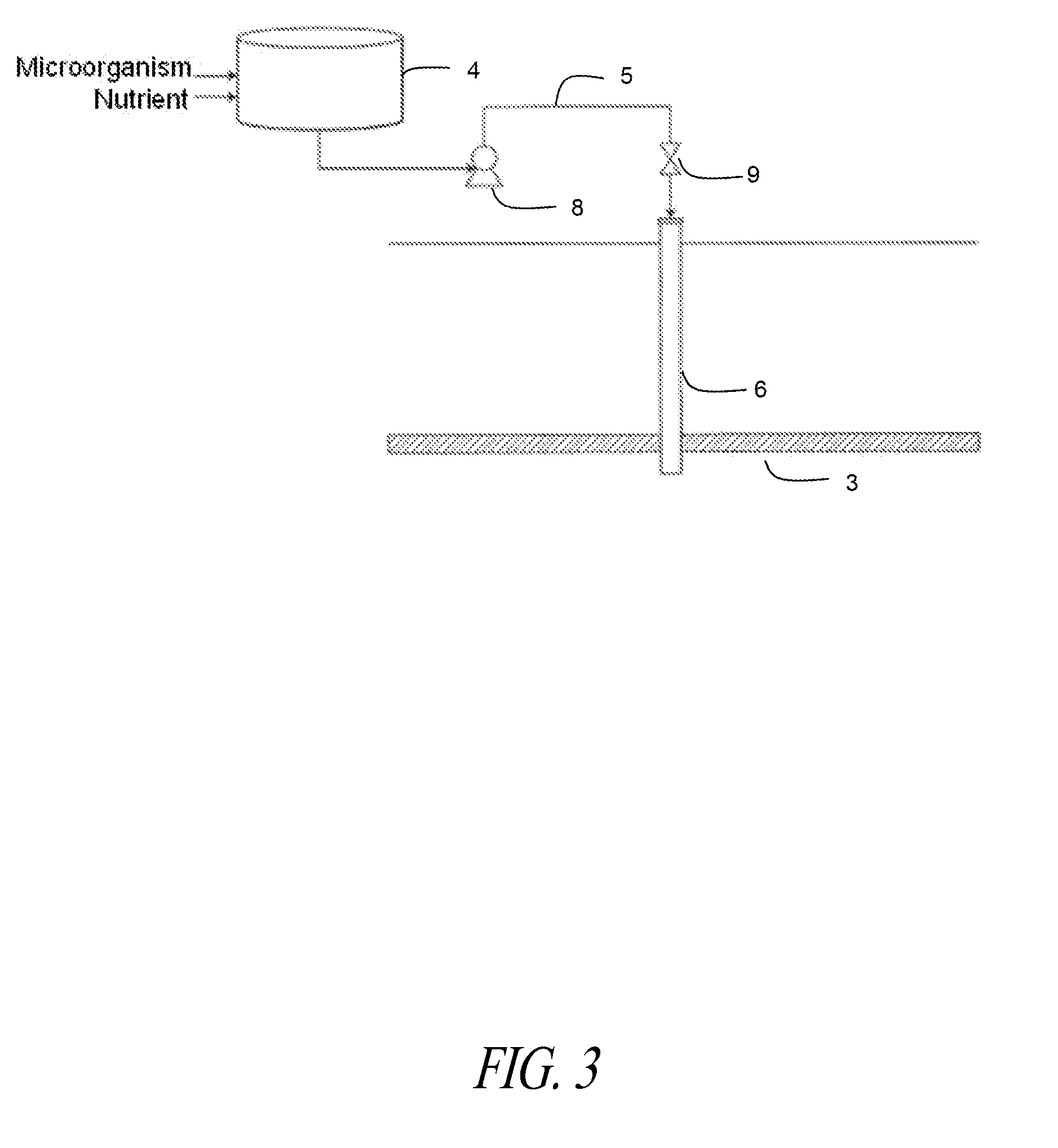Microbial enhanced oil recovery process for heavy oil accumulations
a technology of heavy oil and enhanced oil, which is applied in the direction of fluid removal, wellbore/well accessories, drilling composition, etc., can solve the problems of ineffective water flooding of heavy oil, no widely applicable commercial eor techniques to increase the recovery of cold heavy oil beyond the primary level, and the end of primary chop production wells
- Summary
- Abstract
- Description
- Claims
- Application Information
AI Technical Summary
Benefits of technology
Problems solved by technology
Method used
Image
Examples
first embodiment
[0025]Referring now to FIG. 2 and a single well, or multiple wells in communication being operated in a huff-and-puff mode, which have undergone a primary CHOPS process (“post-CHOPS wells”) are selected for the post-CHOPS MEOR process (step 10). Then, gas producing species of microbial organisms (“exogenous microbes”) and suitable nutrients for these microbes are selected for the post-CHOPS MEOR process, and prepared for injection (step 12). The exogenous microbes and their nutrients can be selected from those gas-producing species of microbes and their nutrients currently used in conventional MEOR processes and include but not limited to: Clostridium, Desulfovibrio, and Pseudomonas. These bacteria can ferment carbohydrates to produce biogas. Therefore, carbohydrate sources such as molasses, sugar plant waste streams, malting wastes, manure and others that contain all the necessary nutritional components (e.g., carbon, nitrogen, phosphorous, etc.) are suitable nutrients can be inje...
second embodiment
[0033] and referring to FIG. 4, the post-CHOPS MEOR process utilizes indigenous gas-producing microbes, i.e., microbes already present in the reservoir 3. In this embodiment, a determination is made as to whether any indigenous gas generating microbial consortia (hereinafter referred to as “indigenous microbes”) are present in the reservoir 3 (step 20). If the formation contains suitable species of indigenous microbes and in sufficient concentrations, then one or more nutrients suitable to these indigenous microbes are selected (step 22) and mixed with an aqueous fluid base in the mixing tank 4 to form the injectant (step 24). This injectant is injected by the injectant delivery system 2 into the reservoir 3 (step 26) to promote gas production of the indigenous microbes. Once sufficient injectant has been injected, the well is shut in for a selected period. Once the shut in period has been completed, the well is produced (Step 28).
[0034]To determine the amount of nutrient to be inje...
PUM
 Login to View More
Login to View More Abstract
Description
Claims
Application Information
 Login to View More
Login to View More - R&D
- Intellectual Property
- Life Sciences
- Materials
- Tech Scout
- Unparalleled Data Quality
- Higher Quality Content
- 60% Fewer Hallucinations
Browse by: Latest US Patents, China's latest patents, Technical Efficacy Thesaurus, Application Domain, Technology Topic, Popular Technical Reports.
© 2025 PatSnap. All rights reserved.Legal|Privacy policy|Modern Slavery Act Transparency Statement|Sitemap|About US| Contact US: help@patsnap.com



